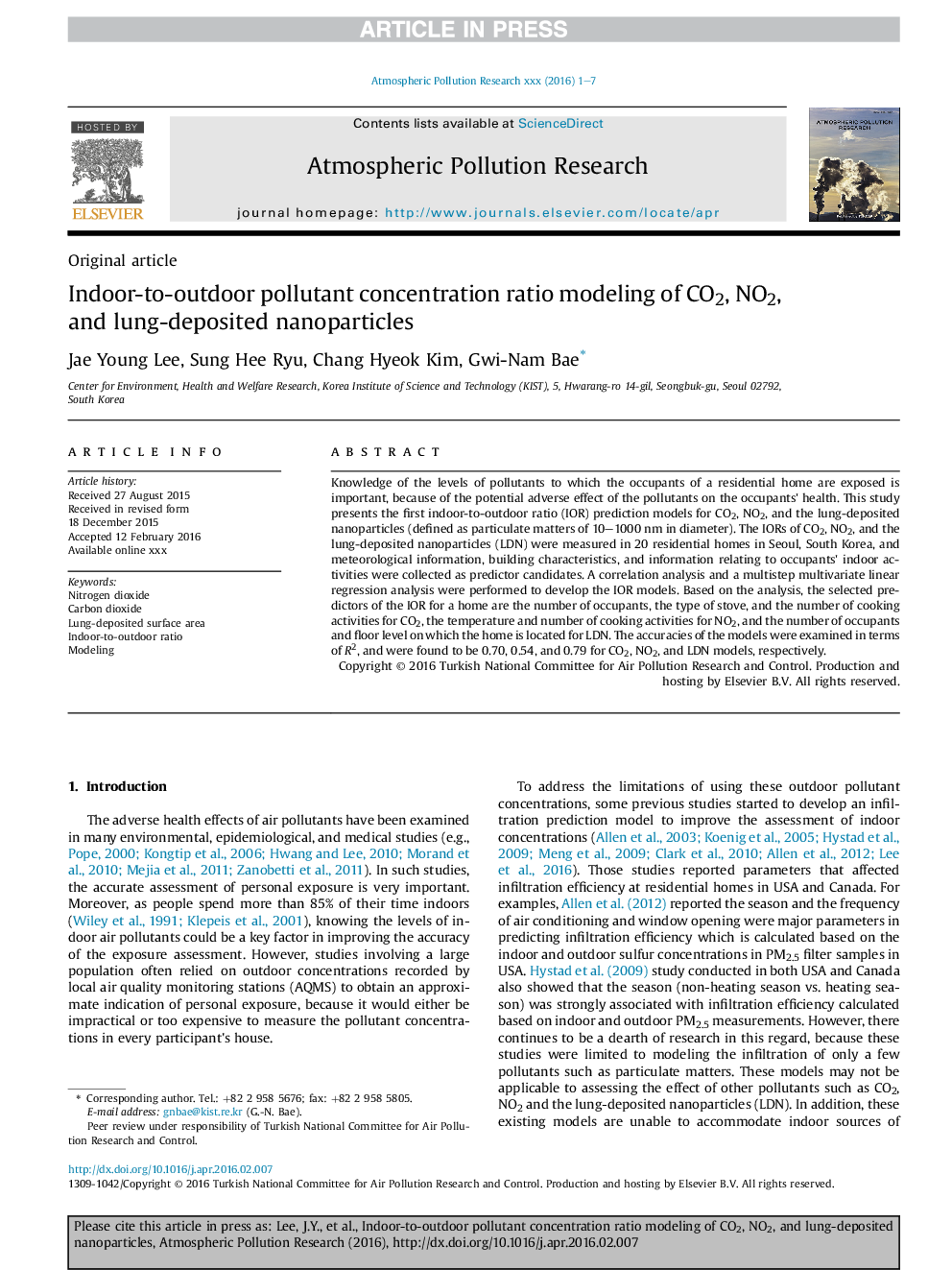| Article ID | Journal | Published Year | Pages | File Type |
|---|---|---|---|---|
| 10179856 | Atmospheric Pollution Research | 2016 | 7 Pages |
Abstract
Knowledge of the levels of pollutants to which the occupants of a residential home are exposed is important, because of the potential adverse effect of the pollutants on the occupants' health. This study presents the first indoor-to-outdoor ratio (IOR) prediction models for CO2, NO2, and the lung-deposited nanoparticles (defined as particulate matters of 10-1000Â nm in diameter). The IORs of CO2, NO2, and the lung-deposited nanoparticles (LDN) were measured in 20 residential homes in Seoul, South Korea, and meteorological information, building characteristics, and information relating to occupants' indoor activities were collected as predictor candidates. A correlation analysis and a multistep multivariate linear regression analysis were performed to develop the IOR models. Based on the analysis, the selected predictors of the IOR for a home are the number of occupants, the type of stove, and the number of cooking activities for CO2, the temperature and number of cooking activities for NO2, and the number of occupants and floor level on which the home is located for LDN. The accuracies of the models were examined in terms of R2, and were found to be 0.70, 0.54, and 0.79 for CO2, NO2, and LDN models, respectively.
Related Topics
Physical Sciences and Engineering
Earth and Planetary Sciences
Atmospheric Science
Authors
Jae Young Lee, Sung Hee Ryu, Chang Hyeok Kim, Gwi-Nam Bae,
